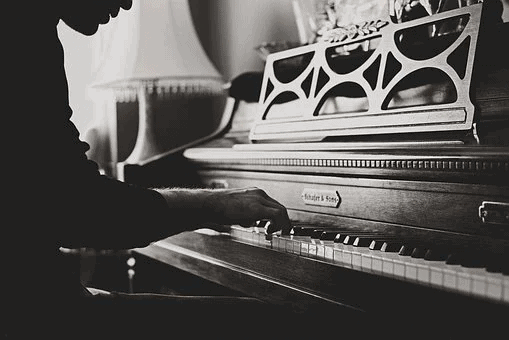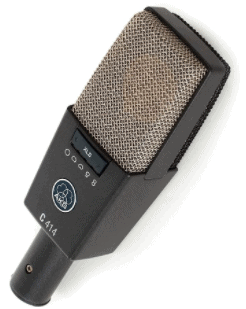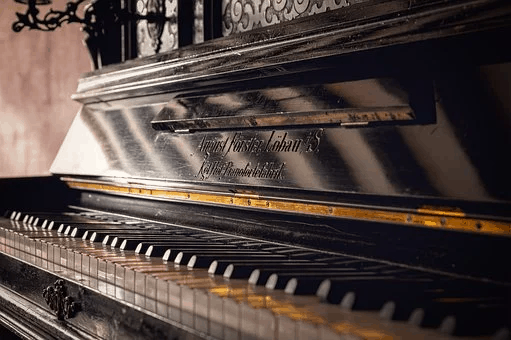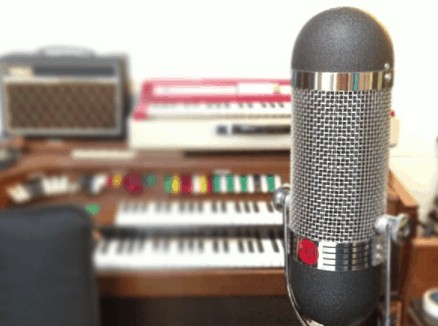Do you want to know how to mic an upright piano? If yes, you are at the right place.
There are a couple of different techniques in miking an upright piano. But today in this article, I will talk about the most common ones, with two microphones paired and with a single microphone.
Let's get started.
Preparing for the recording day
"Train your ears, listen to different genres of music on different headphones, speakers, and systems" was one of the first tips I got when I entered the world of music production.
And really, the more music I'm listening to, the better results I achieve when recording and mixing/mastering my own music.
I've been making arrangements in different music genres, from jazz/acoustic to pop/mainstream for about 15 years now, but for the last couple of years, I've been recording and mixing/mastering my own music.
So the process I will describe on how to mic an upright piano is based on my own experience.
Basic information on miking an upright piano

An upright piano is an acoustic instrument made of wood and steel, strings, and hammers. Therefore, when being played, the whole instrument resonates and makes the sound.
This practically means that there are a lot of sweet spots where you can point to your microphones. It depends on the sound you want to get, the arrangement, and the atmosphere of the track you are recording.
The first step you should take before adjusting the mics is to listen to the artist playing that particular instrument. So you can hear the sound characteristics, the timbre of the instrument.
That will give you input information about which mics you have to use to get the specific sound you're looking for.
It is also important to get rid of all unwanted noise in the room (windows, TV, cell phones) before setting the mics.
The better the recording room you have, the better result you will get. Try to avoid materials such as glass and ceramics in the room and go with the woods and carpets on the floor.
After you have prepared your room for the recording, make sure that the piano is in tune. Always tune the instrument right before the recording session, if it's possible.
These are some of the crucial steps you should take before setting the microphones.
So, let's talk about the most common techniques of miking an upright piano with two microphones paired, and with the single microphone, in both cases with the front panel removed from the piano.
How to mic an upright piano using two mics paired

Depending on which sound you want to get, you can leave the piano leaning against the wall or you can move it off the wall so you can get roomier, less direct sound.
In both situations try to take off the front panel of the piano so you get more definition and more high frequencies of the instrument.
If you are going to record with two microphones, always use a pair of the same mics recorded in mono. Pan the mics left and right in order to get the wider, stereo image of the track.
This technique is the best if you are recording solo piano or acoustic, jazz, or classical music. The final result will be a huge, wide, stereo image of the piano with a lot of details and tonally balanced left middle, and right sides of the instrument.
This technique also gives you a lot of different options when creating your desired sound later in post-production, using EQs, compressors, saturation, etc.
There are 3 different mics you can use depending on your budget.
Low budget option:

Use a pair of Shure SM57 mics on two separated mic stands (left and right side of the piano player) facing the front of the piano (without front panel) at 90 degrees, approximately 15cm away from the strings of the piano.
Before you take your final recording, change the distance of mics until you get the best result (more direct sound or more roomy sound).
Budget option:

Use the same technique with a pair of Neumann 184 but this time set the lower angle, avoiding a direct 90-degree angle.
Since 184s are condenser mics you could pick up too much harshness in the upper-frequency range which you don't want. So be careful and listen to every single recording you take while you're still in the room.
Always use your standard monitoring system that you know well, either headphones or monitors.
Best option:

Use a pair of AKG 414 mics (setup in Omni mode) the same way as Neumann 184. This is definitely the best option.
The sound you will get will be rich, with very defined low frequencies and open highs. Again experiment with the distance of the mics until you get the best result, the amount of direct piano sound and room sound.
Don't forget to check the gain levels before recording, different mics have different gain levels so be careful that your signal doesn't peak.
Additional option:
The same way you recorded the piano from the front side (with the front panel off), you can use your mics for miking the backside of the piano (soundboard) or even the bottom board (take the bottom front panel off). You can get various results, from extremely dark and boomy to very open and less direct.
If you choose to mic the bottom board, be aware that the mic will pick up a lot of pedal noise (if the artist is using pedals), but that can be exactly what you're looking for!
If you have more than two mics you can also use all these techniques at the same time. That will definitely give you more options when doing post-production (miking the front panel, bottom board, and soundboard).
How to mic an upright piano using a single mic

This technique will obviously give you a mono signal and the result will be less wide, centrally focused sound.
Avoid using dynamic mics because you want your mono signal still to sound rich, open, and with a lot of presence. By using condenser or ribbon mics you will be able to capture the whole sound specter of the piano with nice levels of both right and left hands.
Again, take the front panel of the piano off. Use a mic like Neumann U87, Neumann TLM49, or AKG 414 placed over the head of the piano player.
The distance between the mic and the strings of the piano should be around 45cm but experiment with the distance until you get the sound you're looking for.
For a more direct and closer sound, place the mic stand on the side of the player and put the mic right in the front of the artist, close to the artist's chest. The distance from the piano strings should be around 20cm.
Check out your gain level once again before you start recording.
If you are looking for roomier, less direct sound, use the same mic but this time put the mic behind and above the player's head. Experiment with the distance.
This technique can give you interesting results after you apply hard compression and EQ. Avoid this technique if you're recording a solo piano and go with one of the previous techniques that will give you a more direct piano sound.
Using ribbon mics

Did you know that the recordings made from the 1930s to 1970s are all recorded with ribbon mics?
These mics have the most natural sound, beautiful and very defined low end, exceptional midrange, and natural hi-end.
Think about using a ribbon mic when recording upright piano, you will be surprised with the results. Use the same technique as with the single mic recording.
Combining different techniques
For the best result, use a pair of AKG 414 mics as described and place a ribbon mic in the front of the piano, above the player's head, so in between AKGs.
There are a lot of different manufacturers of ribbon mics out on the market but my choice is AEA and Royer ribbon mics.
Read Also: How to Earrape Mic? (Discord, Zoom) – Don't Miss this Guide
Conclusion
Don't forget that the final result will depend mostly on the quality of the instrument itself, recording room, and artist that is playing.
That is the main reason for you to spend as much time as you can listening to the artist playing the piano in the recording room.
Always take your personal monitoring system to the recording session, the one you know the best.
Carefully plan the recording session, listen to the demo track and be sure you already know in what sound direction you want to go.
Be sure you know your equipment but also trust your ears, so train your ears!

